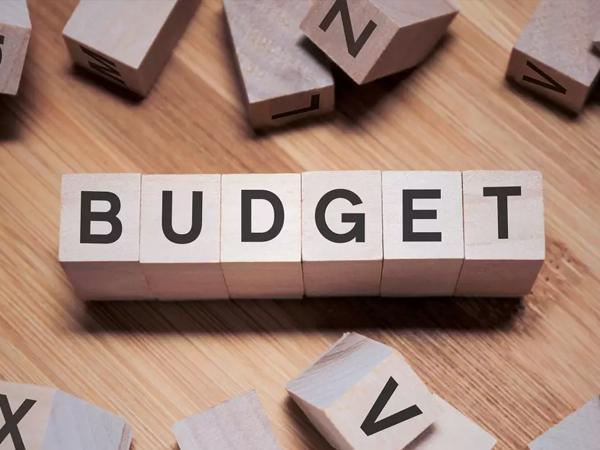Tonight, the Treasurer delivered the 2021 Federal Budget. Stay tuned in the days to come when we publish the Key Opportunities for Private Businesses in relation to the 2021 Federal Budget, by our Perks Tax Advisory Team.
In the interim, here is a run-down on the top highlights announced this evening.
2021 Federal Budget Highlights
- Income tax exemption for qualifying grants made to primary producers and small businesses affected by the storms and floods in Australia.
- Increased support for brewers and distillers by aligning the excise refund scheme for alcohol manufacturers with the wine equalisation tax producer rebate. From 1 July 2021, under the revised scheme, eligible brewers and distillers will be able to receive a full remission (up from 60 per cent) of any excise they pay, up to a cap of $350,000 (increased from $100,000) per financial year.
- Finalisation of the corporate collective investment vehicles (CCIV) component of the measure titled Ten Year Enterprise Tax Plan — implementing a new suite of collective investment vehicles announced in the 2016-17 Budget, with a revised commencement date of 1 July 2022. The CCIV is an investment vehicle with a corporate structure that provides flow- through tax treatment. This investment vehicle will enhance the international competitiveness of the Australian managed funds industry by allowing fund managers to offer investment products using vehicles that are more familiar to overseas investors.
- Taxpayers will be allowed to self-assess the tax effective lives of eligible intangible depreciating assets, such as patents, registered designs, copyrights and in- house software. This measure will apply to assets acquired from 1 July 2023, after the temporary full expensing regime has concluded.
- Removal of the cessation of employment taxing point for the tax- deferred Employee Share Schemes (ESS) that are available for all companies. This change will apply to ESS interests issued from the first income year after the date of Royal Assent of the enabling legislation.
- Reduced red tape for ESS by:
-
- removing regulatory requirements for ESS, where employers do not charge or lend to the employees to whom they offer ESS
- where employers do charge or lend, streamlining requirements for unlisted companies making ESS offers that are valued at up to $30,000 per employee per year.
- The maximum releasable amount of voluntary concessional and non-concessional contributions under the First Home Super Saver Scheme (FHSSS) from $30,000 to $50,000. Voluntary contributions made from 1 July 2017 up to the existing limit of $15,000 per year will count towards the total amount able to be released.
- Eligibility age to make downsizer contributions into superannuation from 65 to 60 years of age. The measure will have effect from the start of the first financial year after Royal Assent of the enabling legislation, which the Government expects to have occurred prior to 1 July 2022.
- Individuals aged 67 to 74 years (inclusive) will be able to make or receive non-concessional (including under the bring-forward rule) or salary sacrifice superannuation contributions without meeting the work test, subject to existing contribution caps. Individuals aged 67 to 74 years will still have to meet the work test to make personal deductible contributions. The measure will have effect from the start of the first financial year after Royal Assent of the enabling legislation, which the Government expects to have occurred prior to 1 July 2022.
- Individual tax residency rules will be simplified with a new modernised framework. The primary test will be a simple ‘bright line’ test — a person who is physically present in Australia for 183 days or more in any income year will be an Australian tax resident.
- Currently non-charitable NFPs can self-assess their eligibility for income tax exemptions, without an obligation to report to the ATO. From 1 July 2023, the ATO will require income tax exempt NFPs with an active Australian Business Number (ABN) to submit online annual self-review forms with the information they ordinarily use to self-assess their eligibility for the exemption. This measure will ensure that only eligible NFPs are accessing income tax exemptions.
- A new “patent box” tax regime will be introduced to further encourage innovation in Australia by taxing corporate income derived from patents at a concessional effective corporate tax rate of 17 per cent, with the concession applying from income years starting on or after 1 July 2022.
- Removal of the exclusion of the first $250 of deductions for prescribed courses of education. The measure will have effect from the first income year after the date of Royal Assent of the enabling legislation. The first $250 of a prescribed course of education expense is currently not deductible. Removing the $250 exclusion for prescribed courses of education will reduce compliance costs for individuals claiming self-education expense deductions.
- Removal of the current $450 per month minimum income threshold, under which employees do not have to be paid the superannuation guarantee by their employer. The measure will have effect from the start of the first financial year after Royal Assent of the enabling legislation, which the Government expects to have occurred prior to 1 July 2022.
- Extension of the LMITO to the 2021-22 income year. The LMITO provides a reduction in tax of up to $1,080. Taxpayers with a taxable income of $37,000 or less will benefit by up to $255 in reduced tax. Between taxable incomes of $37,000 and $48,000, the value of the offset increases at a rate of 7.5 cents per dollar to the maximum offset of $1,080. Taxpayers with taxable incomes between $48,000 and $90,000 are eligible for the maximum offset of $1,080. For taxable incomes of $90,000 to $126,000, the offset phases out at a rate of 3 cents per dollar. Consistent with current arrangements, the LMITO will be received on assessment after individuals lodge their tax returns for the 2021-22 income year.
- The Government will relax residency requirements for self-managed superannuation funds (SMSFs) and small APRA-regulated funds (SAFs) by extending the central control and management test safe harbour from two to five years for SMSFs and removing the active member test for both fund types. The measure will have effect from the start of the first financial year after Royal Assent of the enabling legislation, which the Government expects to have occurred prior to 1 July 2022.
- Temporary full expensing will be extended to allow eligible businesses with aggregated annual turnover or total income of less than $5 billion to deduct the full cost of eligible depreciable assets of any value, acquired from 7:30pm AEDT on 6 October 2020 and first used or installed ready for use by 30 June 2023.
- Companies with aggregated turnover of less than $5 billion are eligible for temporary loss carry-back. An extension will allow eligible companies to carry back (utilise) tax losses from the 2022-23 income year to offset previously taxed profits as far back as the 2018-19 income year when they lodge their 2022-23 tax return. The tax refund is limited by requiring that the amount carried back is not more than the earlier taxed profits and that the carry-back does not generate a franking account deficit. Companies that do not elect to carry back losses under this measure can still carry losses forward as normal.


